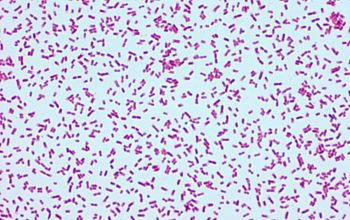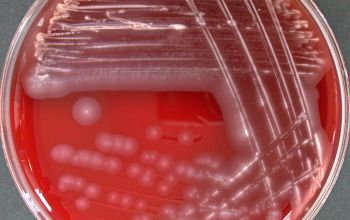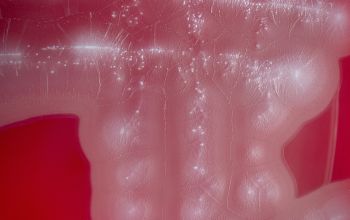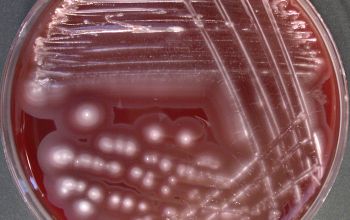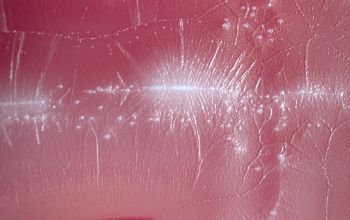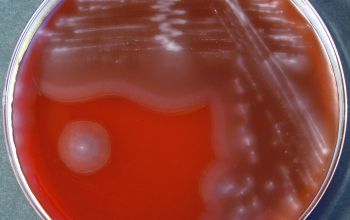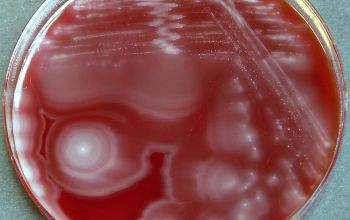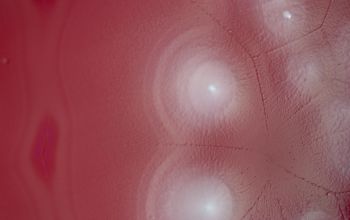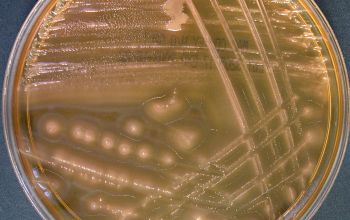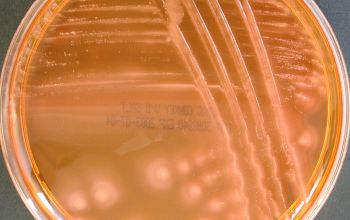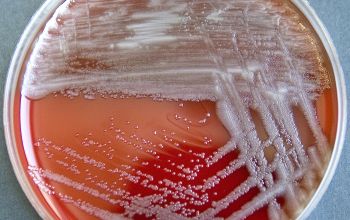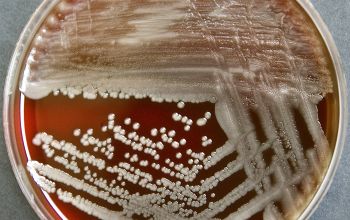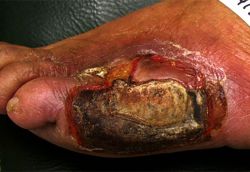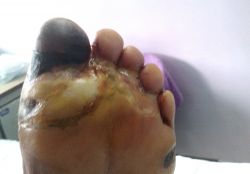Diabetic ulceration with central "dry" gangrene and toward the edges, gangrene with some ascending cellulitis.
Ulcers start when the top layer (surface) of skin or mucous membrane is hurt. This top layer dies. When it dies, the skin or mucous membrane and opens. This leaves an open sore called an ulcer.
Author Dr Gnuwikimedia commons
https://commons.wikimedia.org/wiki/File:ULCERCELLULITIS1.JPG
Alcaligenes faecalis
-
General information
Taxonomy
Family: Alcaligenaceae,
also former Alcaligenes odorans
Natural habitats
It is commonly found in the enviroment, soil and water.
They are also present in a hospital environment, where it is wet, such as; respirators and dialysis systems and can sometimes colonize the skin.
Clinical significance
Alcaligenes faecalis is usually a non-pathogenic bacteria that harbors in the human intestinal tract.
They are commonly found in mixed cultures, especially in diabetic ulcers of the legs and feet .
Transmission of A.faecalis probably due to exposure to contaminated instruments or solutions.
-
Gram stain
Gram negative rods,
0.5-1 x 0.5-2.6 µm
-
Culture characteristics
-
Obligate aerobic
BA: colonies are whitish with a feathery, thin flared irregular edges.
or
colonies appear non-pigmented and similar in size to Acinetobacter.
Some strains (previously named “A. odorans”) produce a characteristic fruity odor and cause a greenish discoloration of blood agar medium (α-hemolytic)
McConkey: growth, non lactose fermenter
BBAØ: no growth
-
-
Characteristics
-
References
James Versalovic et al.(2011) Manual of Clinical Microbiology 10th Edition
Karen C. Carrol et al (2019) Manual of Clinical Microbiology, 12th Edition

